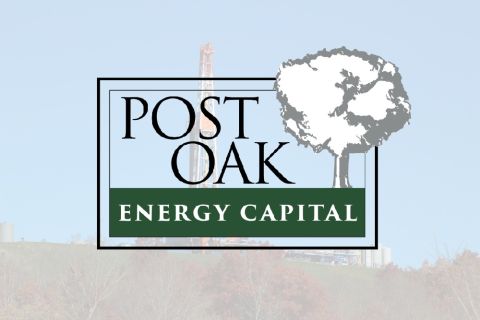
OPEC is dead. This idea is becoming the platitude thrown around the oil analysis echo chamber.
It is certainly a compelling narrative. As the prominence of U.S. shale production surged, OPEC has abdicated its role as a price stabilizer. OPEC members, especially Saudi Arabia, have indicated that they must be creative in managing the market going forward, but they are divided by highly variable interests.
We at Stratas Advisors learned several things from our time at the recent OPEC meeting in Vienna that may alter this plotline.
Saudi Arabia recommits to OPEC, even if Iran does not. New Saudi Oil Minister Khalid al-Falih came to the OPEC meeting several days early to meet with OPEC members and staff in an attempt to reinforce the kingdom’s commitment to the organization. Although his early arrival was clearly political, it still represents a meaningful desire by the Saudis to restore goodwill after April’s disastrous meeting in Doha. The Iranian delegation, by contrast, arrived Wednesday evening, limiting access by other OPEC members. Based on its proposals to reinstitute quotas, and its proclamations about doubling current export levels, Iran did not seem conciliatory. Time will tell if this relationship is mended, but Saudi efforts to repair relations are a positive sign for OPEC’s future.
Saudi Arabia invests heavily in spare capacity. Saudi reaffirmed that it has been taking advantage of the low oil price environment to invest in new capacity to service the market over the next three to five years. OPEC spoke broadly about concerns over future price spikes due to a tightening oil market.
As capital budgets remain low for global oil majors while demand begins to ramp up, a sharp increase in crude prices is becoming more and more likely. If Saudi Arabia is able to build enough spare capacity, it could use that to ramp up production and mute price spikes that could cue drilling by higher-cost U.S. shale producers. This is consistent with its plan to minimize and manage events that “shock the market.”
Small victories indicate greater potential alignment. Combine the election of a new OPEC Secretary General with rising oil prices, and it becomes clear that tensions within OPEC have abated substantially. If the market tightens as predicted, OPEC’s desire to play a price-stabilizing role could be realized by its agreeing to a production cap, cut or target that does not markedly limit Iran’s or Iraq’s resurgence.
Agreeing to such terms would not be easy for Saudi Arabia. Iran is moving toward its goal of doubling its exports faster than most had predicted. Once that goal is reached, Tehran may become more open to participating in a production cut, or at least a cap. Such a situation would provide support for Saudi Arabia and the rest of OPEC to take on a more geocentric perspective when considering market movements and fellow exporters’ economic realities.
Longer term, the bigger issue for Saudi Arabia, and OPEC, will be their ability to manage the magnitude of future Iraqi production. This will be complicated by the possibility of Iran and Iraq both being able to invest in their oil sectors. The last time OPEC faced a similar dynamic was in the early ’80s.
At press time, oil prices were above $50 per barrel. While this is far short of the days of $100-plus, it does provide OPEC’s larger producers the ability to watch and wait. As oil price rises, this will be the first true test of the temperament of U.S. shale producers. How many operators will re-enter, and at what rate? This information indicates to OPEC how much it needs to produce to maintain market share and keep prices stable. Much of OPEC’s future market prowess will depend on cost reduction efforts and efficiency improvements by U.S. shale producers.
OPEC members’ willingness to pump despite low oil prices demonstrated to the world that the organization still has influence. Now, with a tightening oil market, rising Saudi spare capacity, stronger demand and less resilience from U.S. shale producers, OPEC will try to use this influence for its own economic benefit once again. Of course, these conditions do not necessarily ease finding the most elusive piece of the puzzle: cooperation.
Recommended Reading
ConocoPhillips Hits Permian, Eagle Ford Records as Marathon Closing Nears
2024-11-01 - ConocoPhillips anticipates closing its $17.1 billion acquisition of Marathon Oil before year-end, adding assets in the Eagle Ford, the Bakken and the Permian Basin.
Oilfield Services Firm Flowco Files IPO Paperwork
2024-12-09 - Oilfield services provider Flowco filed paperwork for an IPO, one of several energy-focused players seeking to test the public markets.
Devon CEO Muncrief to Retire, COO Gaspar to Take Top Job in March
2024-12-09 - Devon Energy President and CEO Rick Muncrief, who has led Devon during past four years, will retire March 1. The board named COO Clay Gaspar as his successor.
Matador Resources Credit Facility Upped by 30% to $3.25B
2024-12-04 - Matador Resources’ 19 lenders unanimously approved a 30% increase to the E&Ps borrowing base to $3.25 billion.
Post Oak Backs Third E&P: Tiburon Captures Liquids-rich Utica Deal
2024-10-15 - Since September, Post Oak Energy Capital has backed new portfolio companies in the Permian Basin and Haynesville Shale and made an equity commitment to Utica Shale E&P Tiburon Oil & Gas Partners.
Comments
Add new comment
This conversation is moderated according to Hart Energy community rules. Please read the rules before joining the discussion. If you’re experiencing any technical problems, please contact our customer care team.





